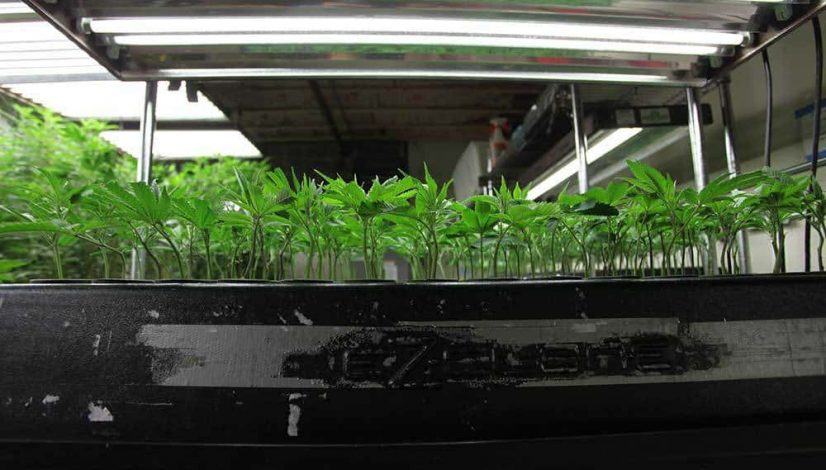How To Choose Nutrients For Cuttings And Young Clones
The post How To Choose Nutrients For Cuttings And Young Clones appeared first on High Times.
Trying to figure out how to choose nutrients for cuttings and young clones? Well, you’re in luck! High Times Cultivation Editor Nico Escondido answers all of your grow questions in his weekly Nico’s Nuggets column, and today’s piece is all about what to feed new cuttings and seedlings.
The Question: How Do I Choose Nutrients For Cuttings And Young Clones?
Mr. Escondido,
Hello from Oregon! I hope you actually read these. I am an avid pot smoker, and now, I have decided to try my hand at growing some of my own. Here in Oregon, I can buy clones easily and want to start a garden of 6 – 10 plants, so I bought a dozen clones (I figure a few might not make it) and have them under fluorescent lamps in big red Solo cups.
My plan is to grow them for a week, then transplant them into larger containers and move them under MH lamps for the vegetative stage.
My question is about what to feed these young clones over the next couple of weeks? Do I use straight grow/veg formulas, or is that too much? Maybe use the Lucas formula for now? Any advice will help! Many thanks, amigo.
— Austin M.
The Answer: Utilize These Formulas As Nutrients For Cuttings And Young Clones
Howdy, Austin.
Thanks for reading HT.com and welcome to the world of growing! As I always say, growing your own in the most rewarding endeavor a marijuana enthusiast can take on!
New Cuttings

Cuttings this young need only moisture and heat to develop roots.
Your question about nutrient programs for cuttings and young clones (and seedlings, too) is a very good one. Every grower has his or her own ideas on the subject, and a lot will depend on the strain you are growing and the exact age of the cuttings.
Very young cuttings, such as those that have just been sliced from the mother plant, do not need any nutrients.
Giving new cuts any nutrients would be pointless until roots develop as they cannot absorb any mineral content. It could also further the initial shock these poor little branches are going through.
Instead, these new cuts should be dipped in a rooting hormone (gel or powder-based) before being placed into their plugs for rooting. Sometimes it is helpful to create a mild solution of distilled water and vitamin B1 and apply to the plugs to help alleviate any stress the younglings are going through and assist in the rooting process.
Once roots have begun to appear on the underside of their Rockwool plugs or peat pellets, they can start to handle mild nutrient solutions—very mild.
It is important to understand that nitrogen (N) can work against the plant hormones or rooting hormones that may have been applied during the cutting. Salts in nutrients also make it a lot harder for young developing roots to absorb the water they need.
Young Clones (or Seedlings)

Clone machines like this one help cuttings root. Use vitamin B1 and rooting hormones to aid the process.
Once you see the white tips of roots protruding from your plugs, your plants are in good shape and much more likely to survive and grow into mature adult plants.
During the vegetative phase, we use “grow” formulas that are rich in nitrogen. However, nitrogen tends to divert growth from the root zone to the plant’s top. This is not ideal as it is critical to the life and development of the plants to have a large, robust root structure.
Thus, you would not want to use a “grow” formula early on, but rather a mild nutrient solution of very low nitrogen. Looking at the N-P-K (nitrogen-phosphorous-potassium) ratio on the labels of nutrient bottles will help you.
Something like a 1-3-3 ratio would be ideal.
You mentioned the Lucas formula, which is a general way of halving the dosages recommended by nutrient manufacturers. This is a smart way to go, especially if your nutrients are high in N-P-K mineral values.
Simply take half—or even a third—of the recommended amount of nutrients and dissolve it in the amount of distilled water recommended.
If you are unsure about mixing nutrient solutions or are worried that your solution might be too strong for young plants, you can test your solution by measuring its pH level using a pH meter or pH (litmus) strips.
For young clones and seedlings still developing their roots, the pH range required for rooting cells to have maximum nutrient absorption should be between pH 5.1 – 5.7.
Once your plants have been transplanted into the larger containers for their vegetative growth stage, wait a week for them to settle in and get accustomed to their new environment before starting with their “grow” nutrient program.
Good luck, Austin and let us know how the ladies fare!
The post How To Choose Nutrients For Cuttings And Young Clones appeared first on High Times.


